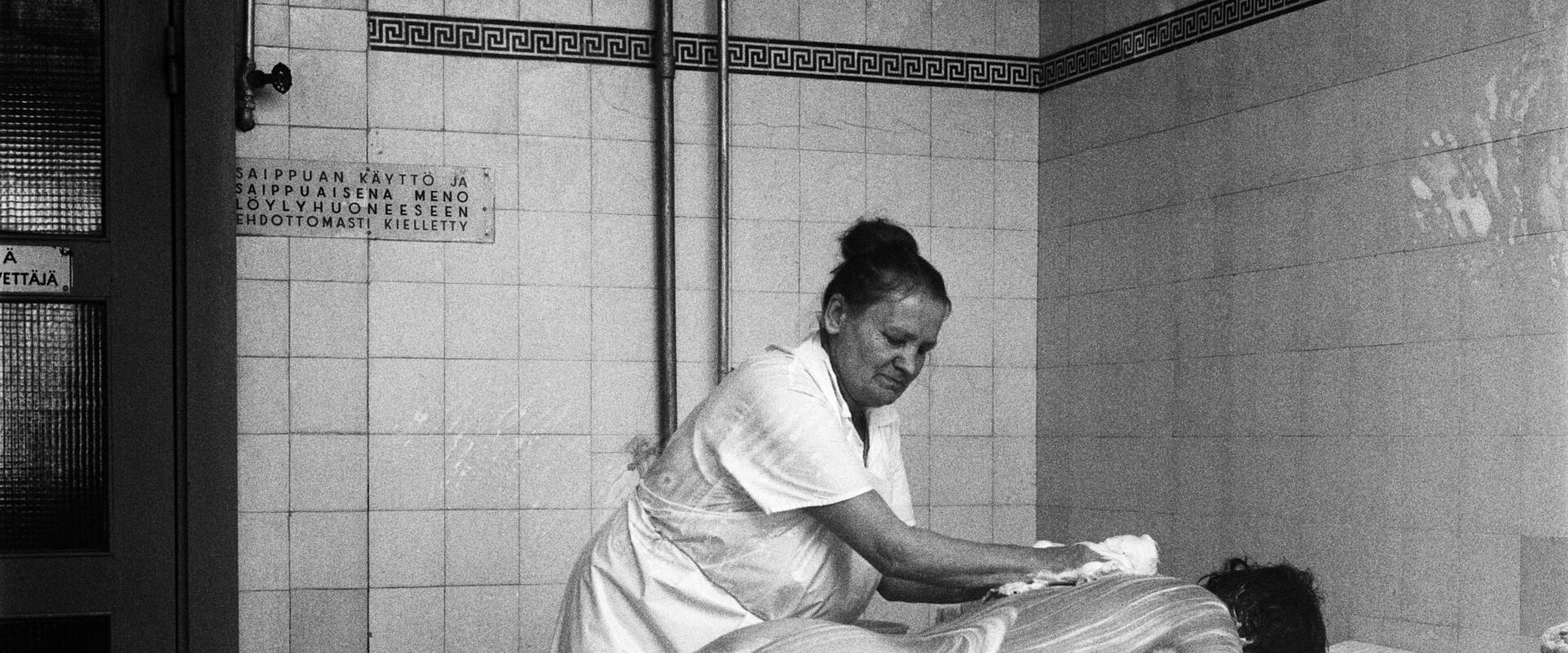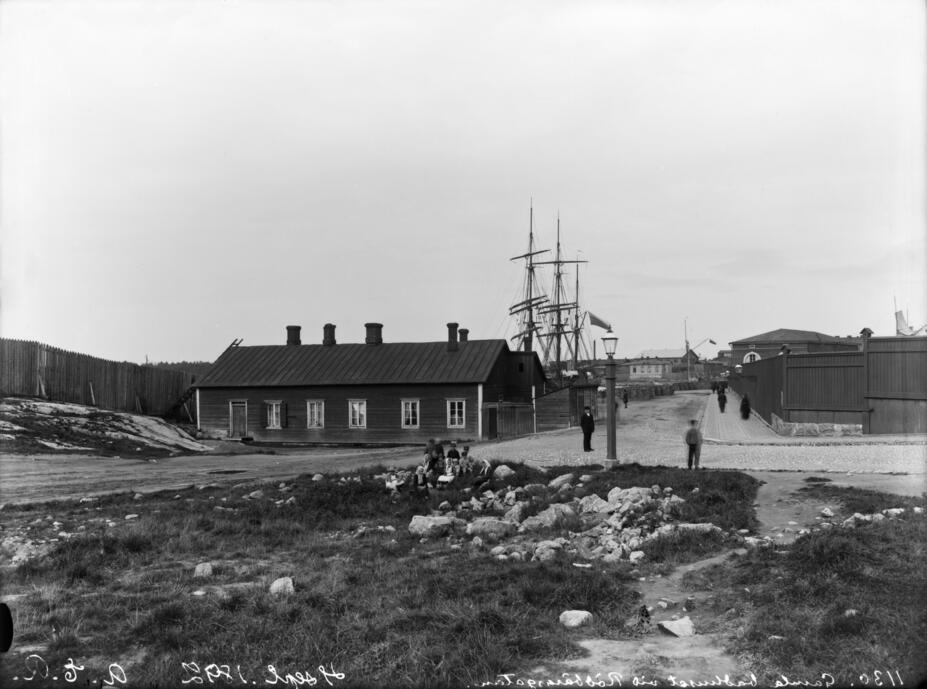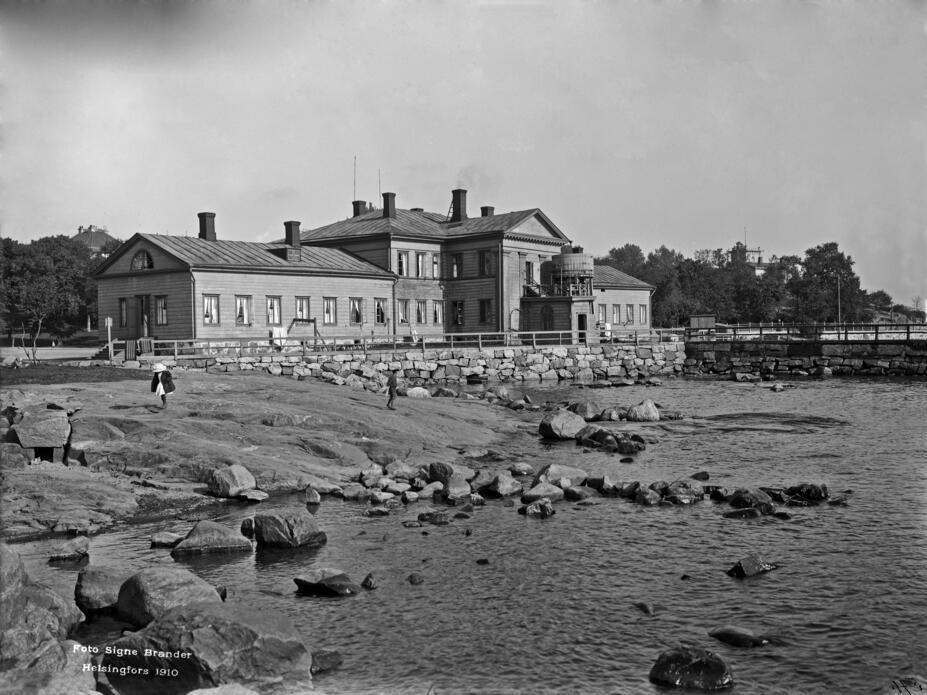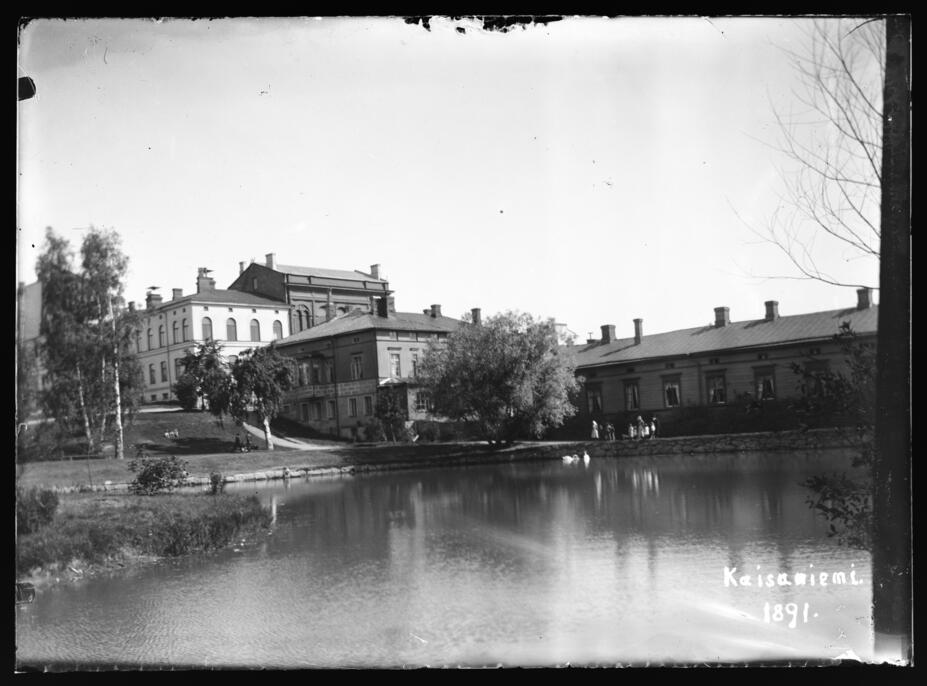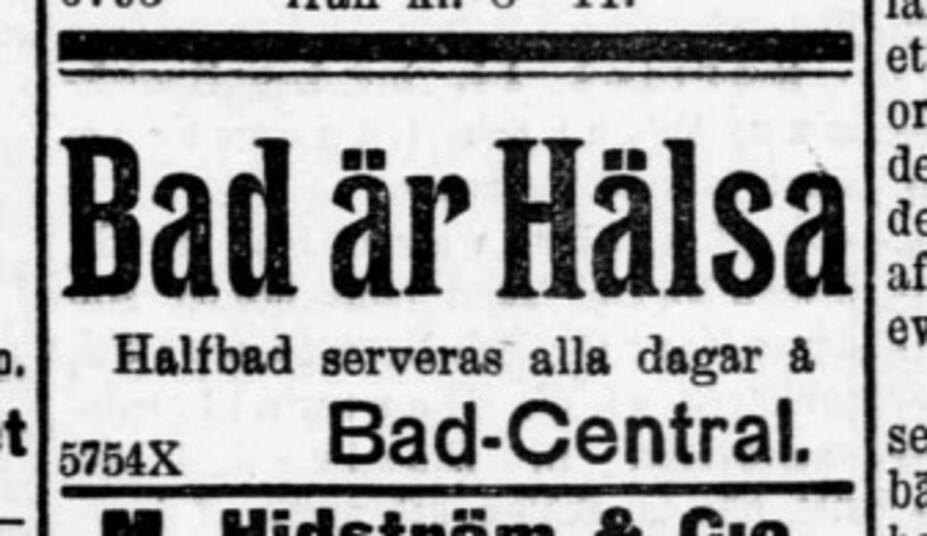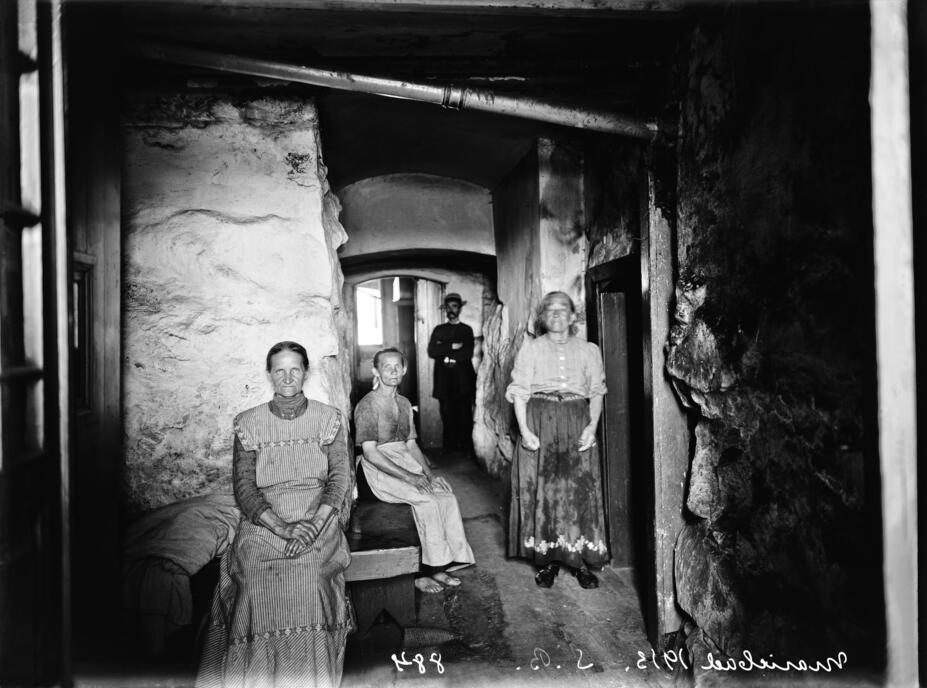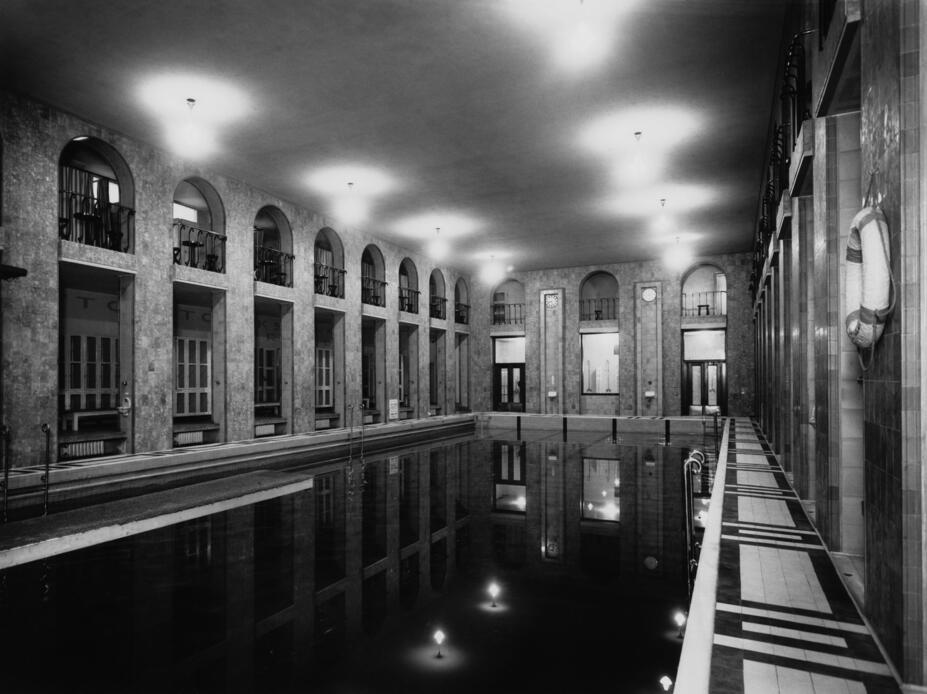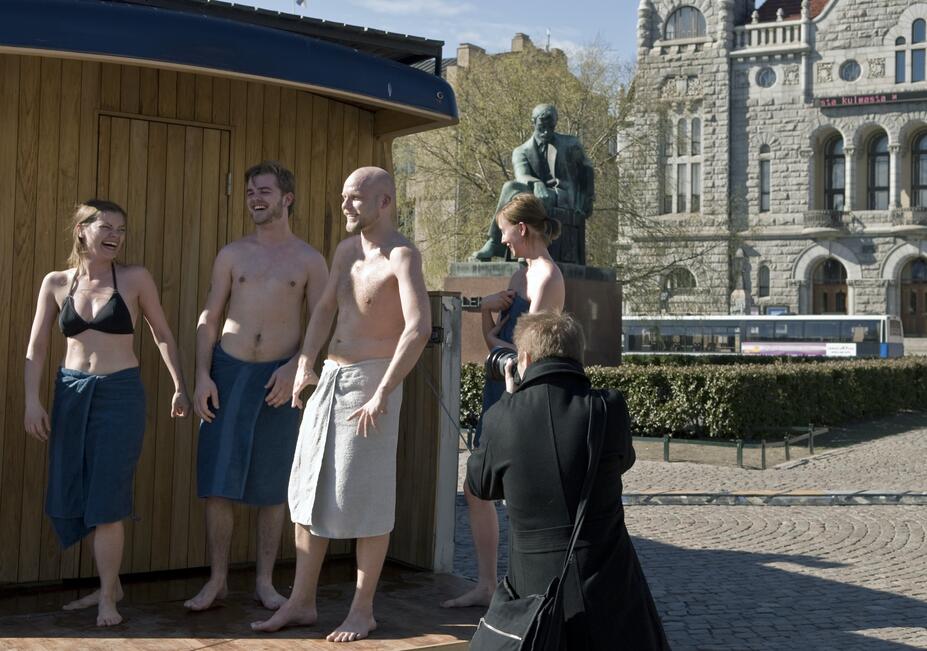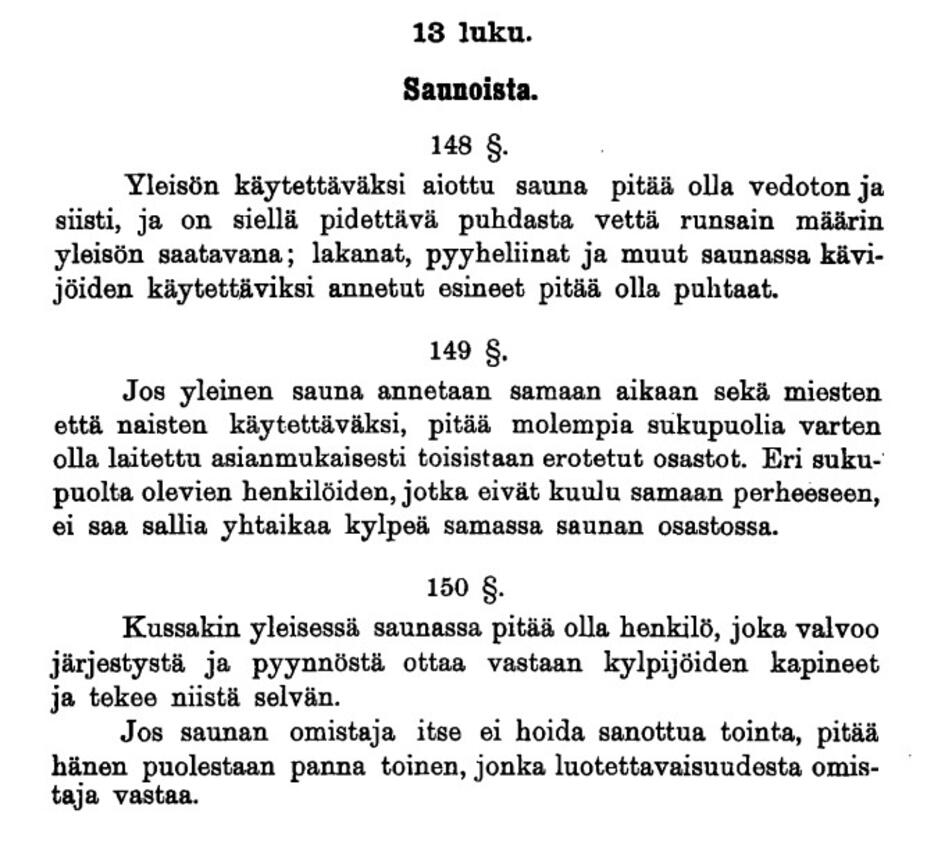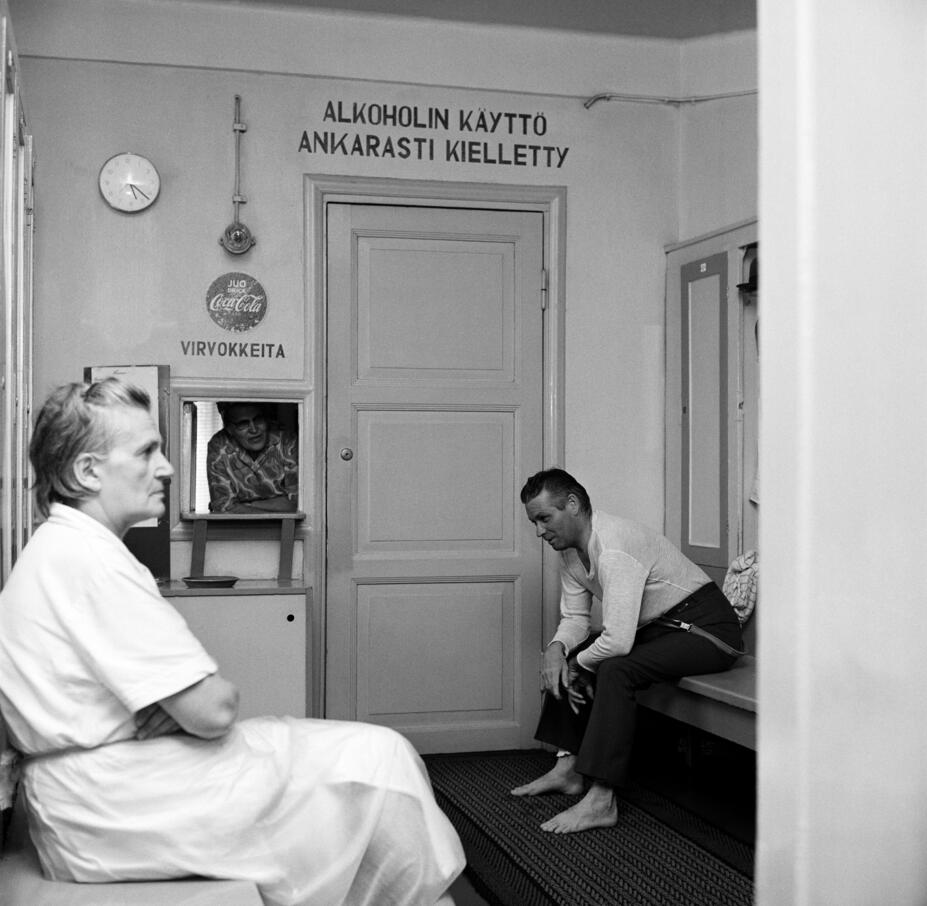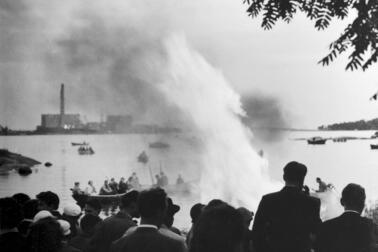From chimneyless saunas to cold water baths
In the early days of Helsinki, there was a sauna in the yard of most houses. They were necessary but also dangerous buildings. Because of the risk of fire, the building of chimneyless huts and saunas in Finnish towns was banned in the 1720s. Helsinki residents did not comply with the ban very well. Saunas were built because they were needed. Doctors also recommended bathing in a sauna to cure a wide range of ailments.
As industrialisation and population growth accelerated in the 19th century, there were more and more workers in Helsinki who did not have access to their own or their employer’s sauna. The first public saunas were created for them and Russian soldiers. The upper social classes preferred public baths. In the early 19th century, before the Crimean War, Helsinki was a popular spa town among Russians. Public baths were holiday or leisure resorts meant for the upper classes, where people relaxed, spent time and took care of their health during the summer season from May to September or October. There were cold water baths, as opposed to saunas that offered hot baths. The first heated indoor swimming pool was built in the 1890s at the Engbergin kylpylaitos, located on Vladimirinkatu street, which is now Kalevankatu.
Saunas for everybody
Cold water baths were primarily meant for the upper classes. The ordinary worker’s cold-water bath was a washbasin or bucket into which water was taken from a well. They longed for the warmth of a sauna and the opportunity to wash themselves with warm water, especially after the working week. That is why public saunas were crowded in the evenings and on Saturdays. Attempts were made to reduce congestion by appealing to the guests and by reserving special bathing times for Russian soldiers, among other groups. Chimneysweeps used saunas often, and a journeyman’s apprenticeship contract included a daily paid sauna. However, the owners of public saunas insisted that chimneysweeps come to bathe before the sauna opened for other guests because of the mess they made. Before a sauna was built in Helsinki County Prison in Katajanokka, prisoners used to bathe in Osipoffin sauna at the same time as other guests, wearing chains.
The sauna fee was an indication of the general level of the sauna and, at the same time, of the income level of the guests. There were also saunas with differently priced sections, such as Dahlströmin sauna on Tähtitorninvuori hill, near Kaivopuiston kylpylaitos, and Marie-Bad on Mariankatu. In addition to the general section, they offered the possibility to reserve a section for your family or party. Marie-Bad was also a favourite of the ageing Zachris Topelius. In his old days, Topelius lived in his villa in Sipoo, but when visiting Helsinki, he liked to bathe in the familiar Marie-Bad – even though he lived in the Wilhelmsbad spa hotel. The reason was Marie-Bad’s skilled masseuse. In addition to the services of a washerwoman, many public saunas offered massage and cupping services for a separate fee.
Not everyone could afford a washerwoman, but the basic sauna fee was quite reasonable at best. The small sum did not buy you a luxurious bathing experience, as well into the early 20th century, public saunas were dimly lit rooms with a dirt floor where your toes were cold, and your hair almost burned. A bucket served as the shower, and the experience was not necessarily very relaxing.
In the 1840s, merchant Langéen, who built his public baths in Siltasaari, justified his application for a building permit on the grounds that the district did not yet have a public sauna. This quickly changed as the city’s population grew, and there were around 70 public saunas by the 1880s. Especially in Kallio, a sauna was often built in a new block of flats. It served both the residents of the building and, as a public sauna, the residents of neighbouring buildings. The number of public saunas peaked at over 120 in the 1940s. This was also the time of the worst housing crisis.
As bathrooms became more common, the number of public saunas dropped. Saunas in connection with indoor swimming pools replaced some of them. New public saunas were still built in the suburbs in the 1960s, but fewer than ten remained by the early 1980s. In the 21st century, public saunas are a place of recreation, but the COVID-19 pandemic recently reduced the number of public saunas. Many Helsinki residents still long for the opportunity to take a “cold bath”, but there are few suitable places for public saunas by the sea.
Good and bad sauna habits
The only two places where a city resident was truly close to strangers were the sauna and church, which is why you were expected to be well-behaved and not shout or curse in the sauna. Up until the 1880s, some public saunas were mixed saunas. Still in the early 20th century, the men’s and women’s sections were often separated only by a curtain. A public sauna was a semi-public space where nudity was normal. Only the washerwomen and cuppers were clothed. There were rules for mixed saunas, however. It was common practice for young women to bathe earlier, when the men were still at work. Although saunas were quite dim before electric lights, a towel or a sauna whisk provided some extra privacy.
The staff and regular guests made sure that nothing indecent took place in the sauna. Nudity was still suspicious. The morals of bathers and masseuses in public saunas were questioned, with or without reason. In 1840, the young student Zachris Topelius incurred the wrath of the washerwomen of a public sauna after questioning their morals. To protect the female staff of saunas, workers’ associations proposed in the early 20th century that all washerwomen should be over 40 years of age. The washerwomen and masseuses in public saunas came into close physical contact with men, and many of the women arrested for prostitution in Helsinki had previously worked in a public sauna. As the washerwomen and masseuses did not earn much, the temptation to offer extra services for a fee was high.
Pimping in public saunas and spas was suspected, and at least one sentence was given. In 1885, it emerged that mainly Russian officers and businessmen had been partying late into the night in two saunas on Malminkatu, drinking champagne in the company of women ordered from the upper floors of the building. The Makoffskys, a husband and wife who owned the saunas, claimed that they could not know whether the sauna had been rented by a married couple or a gentleman who was accompanied by a prostitute. The Makoffskys were eventually convicted of prolonged pimping.
In most cases, indecent behaviour involved the consumption of alcohol in the sauna or the dressing room. Before prohibition, many customers had liquid snacks with them. A bather could ask the washerwoman to fetch beer from a local shop by promising that she would keep one of the bottles for herself.
